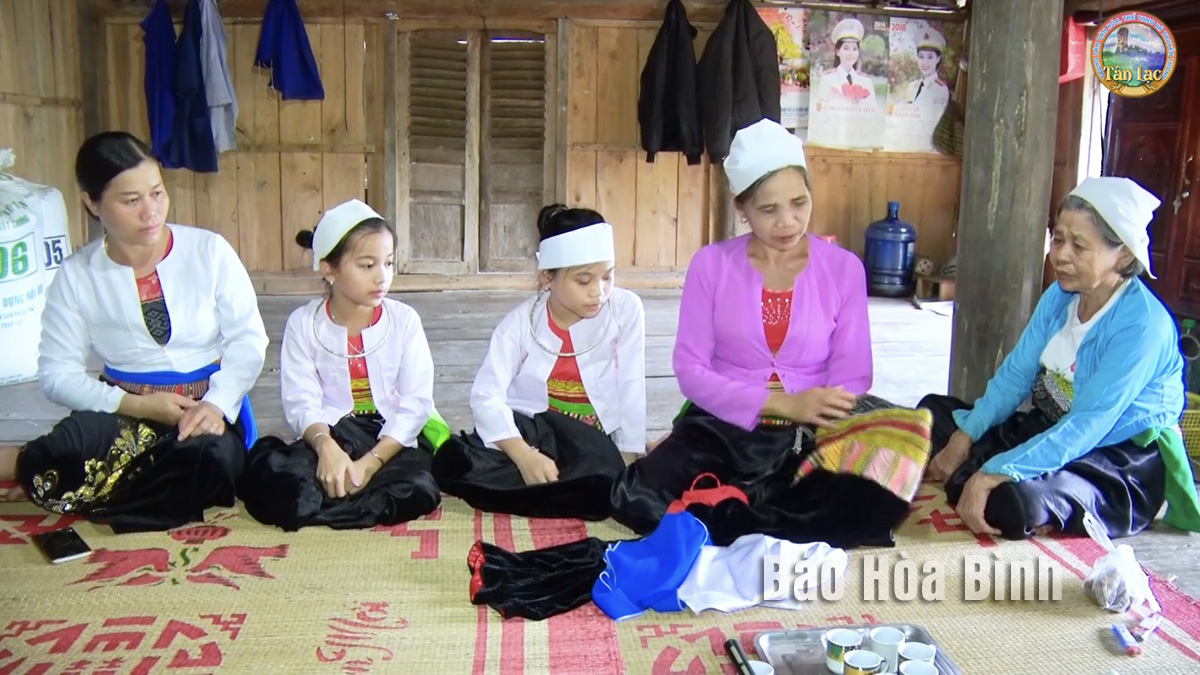
Along with the process of integration and development, traditional cultural identities of the Muong ethnic community in general, and Muong ethnic people in Tan Lac district in particular, are at risk of falling into oblivion. Therefore, many clubs have been established in the locality to preserve and promote the beauty of the ethnic group’s cultural identities.
Tan Lac district preserves Muong ethnic group’s cultural identities.
Bui Thi Luyen, head of Muong people’s cultural preservation and
promotion centre in Man Duc township's Muon Phoi residential area, said
previously in daily life and holidays, Muong ethnic people wore traditional
costumes and played gongs around their village with the aim of praying for a
peaceful year, good luck and a bumper crop. However, in modern life,
traditional costumes or gongs are no longer commonly used.
Muong people’s costumes have been adjusted to suit modern fashion trends.
Instead of using brocade fabric with manual embroidery, their costumes have
been made by synthetic fabrics with industrial print patterns. Belts were also
replaced by ready-made items. Not only costumes, the preservation of language
is also a big concern.
Bui Minh Hong, head of the Culture and Information Department of Tan Lac
district, said that currently, many clubs have been established in the district
such as Mo Muong club, and other clubs to preserve Muong language and costumes.
The district has encouraged its localities to continue to replicate the club
model to preserve the language and costume of the Muong people.
Phong Phu commune, Tan Lac district of Hoa Binh province, is widely regarded as the cultural heartland of the Muong ethnic group. Among its many traditional communities, Luy Ai hamlet (formerly Ai hamlet) stands out as a rare location where the customs and way of life of the Muong Bi people remain largely intact.
The Truong Kha temple festival, a distinctive cultural event held every three years in Vu Ban township, Lac Son district, returned recently with vibrant rituals and folk traditions of the Muong people. Located next to the Buoi River in the Muong Trao fields, the Truong Kha Temple is dedicated to the three Kun Dol deities, revered for teaching farming techniques, irrigation, weaving, and protecting the harvest.
The demand for spaces serving community activities of residents in various areas across Hoa Binh city has been satisfied as local cultural houses now feature modern, spacious facilities thanks to the effective implementation of Resolution No. 49/NQ-HDND issued on December 28, 2021 by the city People's Council, which approved the plan for reorganising, converting, and allocating land for the construction, repair, and expansion of cultural houses in Hoa Binh’s villages and residential areas until 2025.
At the end of May, the Hoa Binh Provincial Ethnic Arts Troupe organized a series of performances for residents in Region 2 and Region 3 communes across the province. Bringing art to ethnic communities in remote, isolated, and especially disadvantaged areas has become a meaningful activity. These are not merely artistic performances but also journeys to disseminate cultural values, enrich spiritual life, and contribute to preserving the cultural identity of ethnic minorities.



